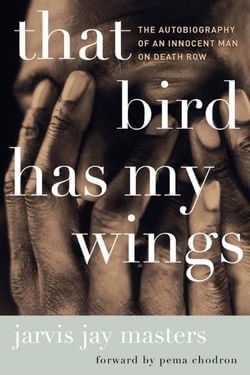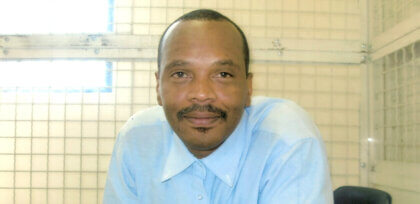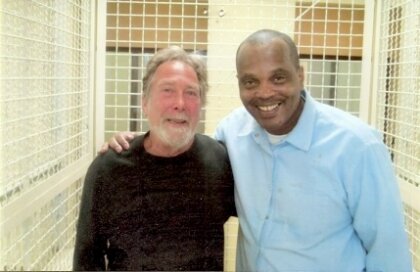
How I found a Buddhist teacher on San Quentin’s death row
 By Will Shonbrun —
By Will Shonbrun —
In the mid 1960s a fascination with Buddhism and Vedanta seeped through my window in the form of books, music, and putative spiritual teachers singing or selling their ideas. It was the birth of hippiedom, with flying freak brothers and sisters and the promise of a new day. I gave up the allure of the cobra’s charming song for the no-nonsense, hard-nosed highway to Buddhism trip, to explore reality and strip away all illusion. Bloody hard work, as it turns out.
First and foremost, Buddhism teaches to closely observe one’s beliefs and in so doing, one’s self-concepts and the origin of those ideas. It is both a contemplative (meditation) and an action-based (one’s behavior in the world) process. Most will soon learn that Buddhist practice is tricky due to the proclivity to bullshit ourselves.
My window of awareness slowly widened, propped up by books and slid further by the counter culture’s in-person purveyors of ancient teachings. In practicing meditation, yoga, and Buddhist precepts one learns it’s a lifetime gig and there’s always more to learn. I surely never expected to find a Buddhist teacher residing on San Quentin’s Death Row. But that’s what happened.
I met Jarvis J. Masters twenty-something years ago, first through his published writings and then face to face through the thick, dirty-looking, plastic window between visitors and visitees. In that way we began a relationship, still ongoing, eventually to where we could visit person-to-person in a 4×9 steel mesh cage, barely big enough for two plastic chairs and small table. There are two rows of 10 joined cages and the guard’s walkway in-between. Close conversation in that setting isn’t easy, but one gets the hang of it.
So, what has been learned from a man whose life experience couldn’t be any more different from mine? In the 1960s, life brought Jarvis Masters, a Black child, into a world of abject poverty, drugs and violence. Then a series of foster homes, education via the streets and gangs, graduating to detention facilities and eventually prison sentences, culminating in a death sentence conviction as an accessory in a prison killing. A full accounting of this crime, and Masters’ life before and after the death verdict in 1985, can be found in the biography of his life by author David Sheff in, The Buddhist on Death Row: How one man found life in the darkest place. In blaring contrast is my life of middle class, white privilege, a caring family and higher education.
It’s important to interrupt the telling of this story to say that I didn’t know at the time prior to meeting him, that Jarvis was innocent of the crime for which he was sentenced to death. I was skeptical of that claim so often used in similar situations, although he had proclaimed his innocence from the very beginning. It was only after some time and knowledge about the case and the legal process, ensuing recantations, and an admittance of guilt by another man for the crime that I became convinced of Jarvis’ innocence. A full recounting of all this history can be read at: www.FreeJarvis.org.
Back to the story.
It’s natural that we take for granted our every-day freedom of choice: Where to go, what to do, whom to be with, what to look at, when to eat and when to bathe and that’s just for openers. All such controls are removed and eliminated for condemned men in San Quentin. The reality of that only hit me after visiting Jarvis and walking back to my car, parked along the Bay, feeling and smelling the ocean and taking in gulps of breath. I was free to drive anywhere I chose, and do, within reason, most anything I wanted. It had never occurred to me how free I was for the most part. I now knew the alternative and it made me shudder. I reflect on this learning every day.

Learning who the man Jarvis Masters was, his history, and who he had become in his 42 years of incarceration, despite almost impassable barriers, would come through the relationship we built.
I think that the term ‘teaching’, or calling Jarvis a teacher is somewhat misleading, but that is what he is. Jarvis’ teaching is conveyed by what he does and who he is, not behind a lectern. For example, he’s written two (published) books: one an autobiography and the other stories taken from his experiences in San Quentin’s Death Row. Both books are enlightening. In his autobiography, That Bird Has My Wings, he unveils his exceedingly troubled history and the extreme circumstances leading to a life of crime and incarcerations.
In his other book, Finding Freedom, he relates stories about prison life, which brings the reader inside and up close to the stark realities of daily life on death row: the seething anger of men locked up 23 out of 24 hours a day, the ever-present fear of guards and other prisoners, and the loss of all hope, ending in death by execution or sickness and old age. It’s the modern form of slavery without life outside a 9 x 12 cage encased in cement. It is a sentence to madness.
Then by a twist of fate, Jarvis is introduced to meditation and Buddhism, a lifeline that will set his mind, body and spirit free to roam and learn and become whole.
Here are only a few of the things I’ve learned from my long friendship with this man. Every morning I awake and walk outside, I look at open sky whatever the weather, trees and hills in the distance, and the smell and taste of fresh air. For this I feel forever grateful. No matter the trials and difficulties life dishes me I still have choices open to me to deal with matters, set new courses, or effect changes for other outcomes. I can be with whom I choose, do pretty much what I want, and live according to my own dictates. In this I’ve gotten to recognize and understand gratitude for my life whatever its vicissitudes.
In the many hours I’ve spent with Jarvis, talking about almost everything – current events, history (which he loves), the important things in our lives and our deep feelings – I rarely, if ever, hear him being judgmental. Of course, he’s aware of the terrible things people do, and the horrible conditions some must contend with, and the uncaring and unloving and misery-making rife in our world. He sees this as a sickness in humanity arising from ignorance and false beliefs, and that all can be, with the right conditions, subject to change. He has spent years working with youths in hard conditions to help them change their outlook and see the possibilities open to them. He uses his life history and experiences and the ways he’s found to deal with great difficulties, to help these at-risk kids from destroying their lives. He’s used his learning and practice of Buddhist principles and actions to help other inmates, in their struggles and tribulations amid the madness, rage and desperation of prison life. On more than one occasion, without concern for his safety, he has acted to protect other inmates and prevent fatalities.
He opens himself and his practice of meditation and self-awareness, to all that ask, including guards, and numerous correspondents seeking some relief and a way of dealing with the crushing condition of their lives.

Through my relationship with Jarvis, I’ve learned that people can fundamentally change. Opening to change or the possibility of it can be one of the hardest things to do. For reasons too psychologically beyond my knowledge, we cling to old ways, old beliefs, and old “knowns” that adhere like super-glue. I think that there needs to be some force, some strong motive for opening ourselves to change. Admitting we might be wrong about some things, especially ourselves, doesn’t come easy and it’s defended by us even though we may not be happy or satisfied with our lives.
Because of an apparent miracle of good fortune, a man sentenced to death for a crime he didn’t do, was thrown a lifeline by someone he’d never known. It was in the form of why and how to do meditation: a process of introspection and self-awareness. The only reason he gave the offer a second’s thought was that he’d come to the end of the road and there was no way out. He had to find some way to live in a 9×12 stone and steel box, until they came to take his life, or go mad. That’s one hard rock of a place to be. But he recognized that the person extending this gift, of somehow staying afloat and sane was sincere and truly wanted to help him. “What the hell,” he thought, “what have I got to lose?” So, he took the unusual offer, and it turned out to be a vehicle to maintain his sanity, and not only his thinking self, but his feeling and caring self; those things we need in order to give and feel love.
It’s not the end of this story. Jarvis’ case arguing his innocence is in the hands of his federal appeals attorneys, Kirkland & Ellis, one of the country’s most prestigious firms. They are working pro bono because they believe in Jarvis’ innocence and unlawful conviction. His book, That Bird Has My Wings, was recently anointed by Oprah Winfrey, and that has brought a degree of fame outside what was formerly a Buddhist circle. Like all things that have come his way, Jarvis takes it all with a measure of interest and equanimity. Whatever the outcome of my dear friend’s life I’ve been singularly and probably undeservedly blessed by the good fortune of having come to know him and learn from him how to be a better man.
Will Shonbrun lives in Boyes Hot Springs







Thank you Will, for this very moving and genuine piece. It’s important the world knows of Jarvis’ personal impact not only in the abstract, but on the real lives of everyday people, especially longtime local community members like you. Thank you for your loyal friendship to Jarvis and may he be closer to justice this year.